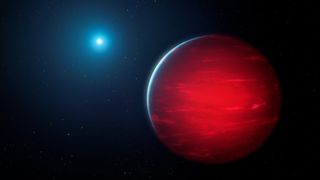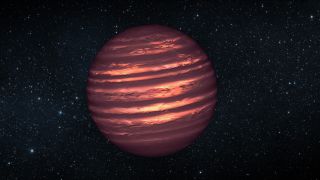Amateur astronomer spots 34 paired-off 'failed' stars in brown dwarf project
The discovery nearly doubles the catalog of nearby known systems like this.
A citizen scientist used old telescope data to find a trove of binary star systems that include what are sometimes dubbed "failed stars."
These stars, also known as brown dwarfs, are mysterious objects with more than 12 times the mass of Jupiter and less than half the mass of the sun. Scientists have long debated whether these objects are more like stars or very large planets, and the new detections might help settle the issue. Even with the best computing technology, humans still have an advantage spotting brown dwarfs in astronomical data, and that's where citizen science enters the scene.
"Modern astronomy archives contain an immense treasure trove of data and often harbor major discoveries just waiting to be noticed," Aaron Meisner, who helps lead the project and is an astronomer at National Science Foundation's National Optical-Infrared Astronomy Research Laboratory (NOIRLab), said in a statement.
Related: Brown dwarfs: The coolest stars or the hottest planets?


Zooniverse's Backyard Worlds: Planet 9 project focuses on spotting brown dwarfs, and it was within that project that amateur astronomer Frank Kiwy spotted the new discoveries. Kiwy was poring through a catalog of 4 billion celestial objects in the National Science Foundation's NOIRLab (National Optical-Infrared Astronomy Research Laboratory) Source Catalog DR2, looking for objects that share the same color as brown dwarfs.
Kiwy's work uncovered 2,500 potential such ultracool dwarfs. A further search of the catalog for objects that may orbit a companion detected 34 such binary star systems. In each system, the ultracool dwarf is joined by a white dwarf, the stellar core that remains after a sun-like star runs out of fuel.

In each newfound system, the two stars are relatively close to each other. In the closest binary pair, the stars were separated by 170 astronomical units. (One astronomical unit equals the distance between the Earth and sun, equaling about 93 million miles or 150 million kilometers.) The largest separation was 8,500 astronomical units. By comparison, our sun is roughly 253,000 astronomical units from the nearest star system, Alpha Centauri.
Get the Space.com Newsletter
Breaking space news, the latest updates on rocket launches, skywatching events and more!
"I love the Backyard Worlds: Planet 9 project!" Kiwy said of his participation. "If you're a person who is curious and not afraid to learn something new, this might be the right thing for you."
A paper based on the research was published Wednesday (June 6) in the Astronomical Journal. A preprint version is available on arXiv.org.
Follow Elizabeth Howell on Twitter @howellspace. Follow us on Twitter @Spacedotcom or Facebook.
Join our Space Forums to keep talking space on the latest missions, night sky and more! And if you have a news tip, correction or comment, let us know at: community@space.com.

Elizabeth Howell (she/her), Ph.D., is a staff writer in the spaceflight channel since 2022 covering diversity, education and gaming as well. She was contributing writer for Space.com for 10 years before joining full-time. Elizabeth's reporting includes multiple exclusives with the White House and Office of the Vice-President of the United States, an exclusive conversation with aspiring space tourist (and NSYNC bassist) Lance Bass, speaking several times with the International Space Station, witnessing five human spaceflight launches on two continents, flying parabolic, working inside a spacesuit, and participating in a simulated Mars mission. Her latest book, "Why Am I Taller?", is co-written with astronaut Dave Williams. Elizabeth holds a Ph.D. and M.Sc. in Space Studies from the University of North Dakota, a Bachelor of Journalism from Canada's Carleton University and a Bachelor of History from Canada's Athabasca University. Elizabeth is also a post-secondary instructor in communications and science at several institutions since 2015; her experience includes developing and teaching an astronomy course at Canada's Algonquin College (with Indigenous content as well) to more than 1,000 students since 2020. Elizabeth first got interested in space after watching the movie Apollo 13 in 1996, and still wants to be an astronaut someday. Mastodon: https://qoto.org/@howellspace
